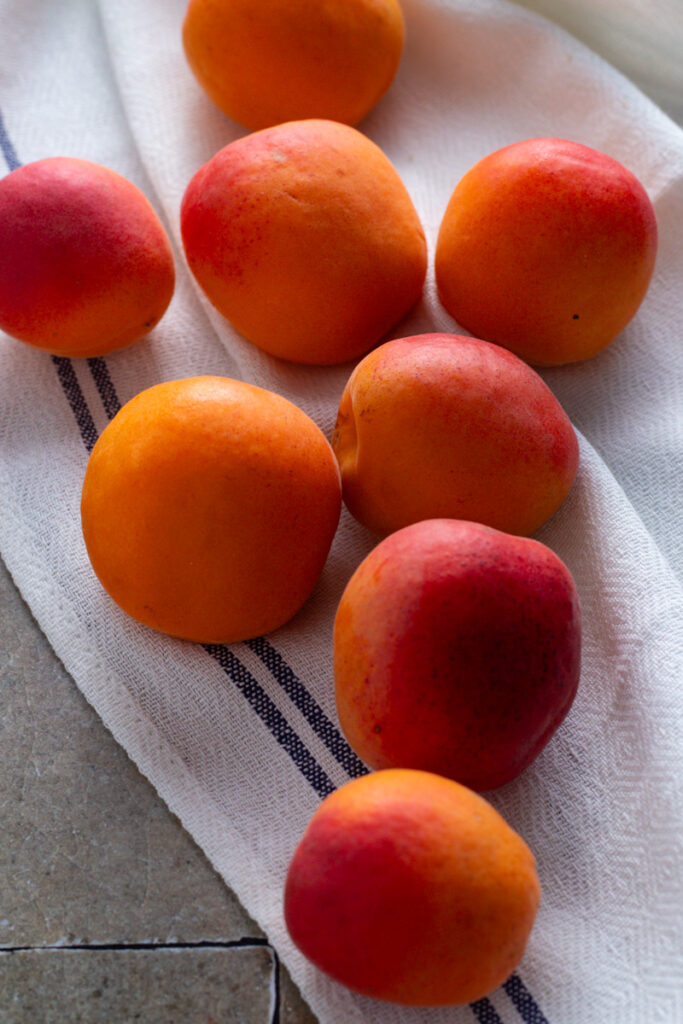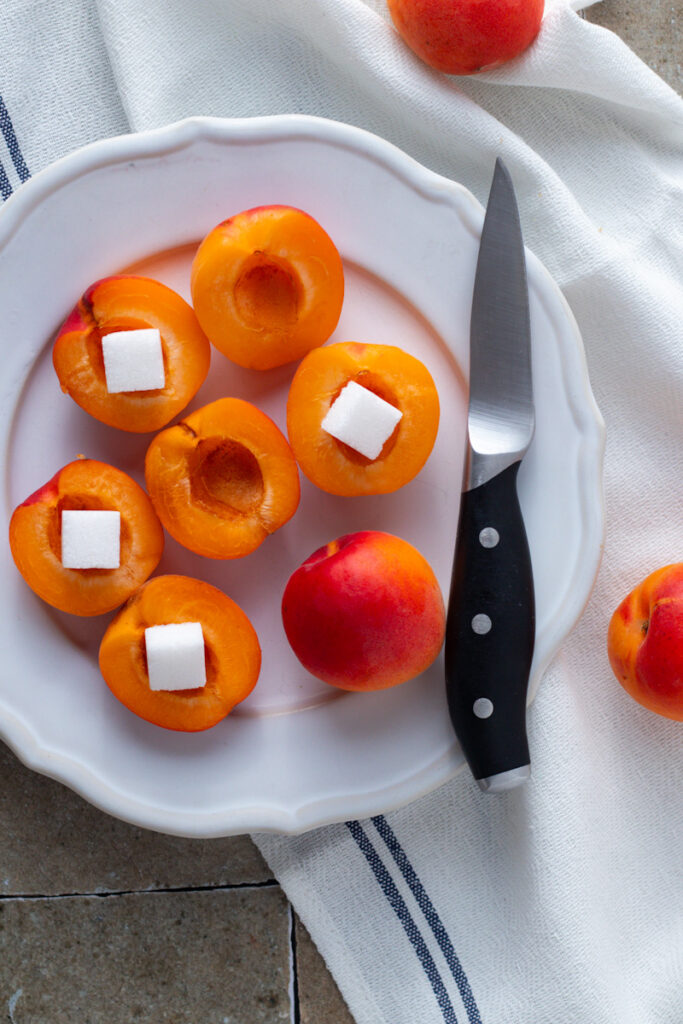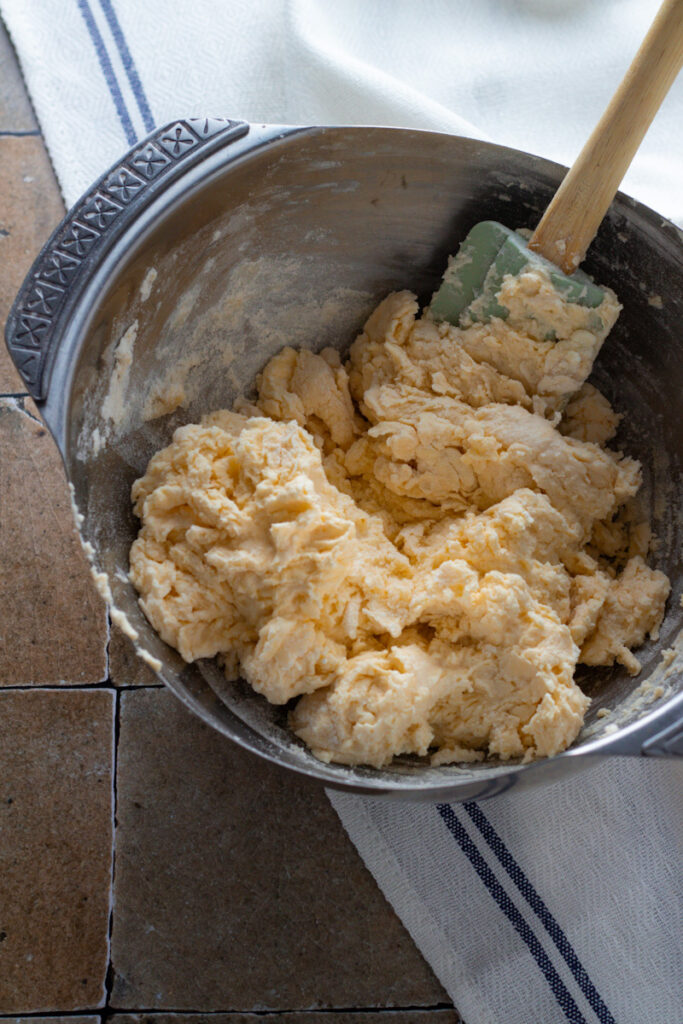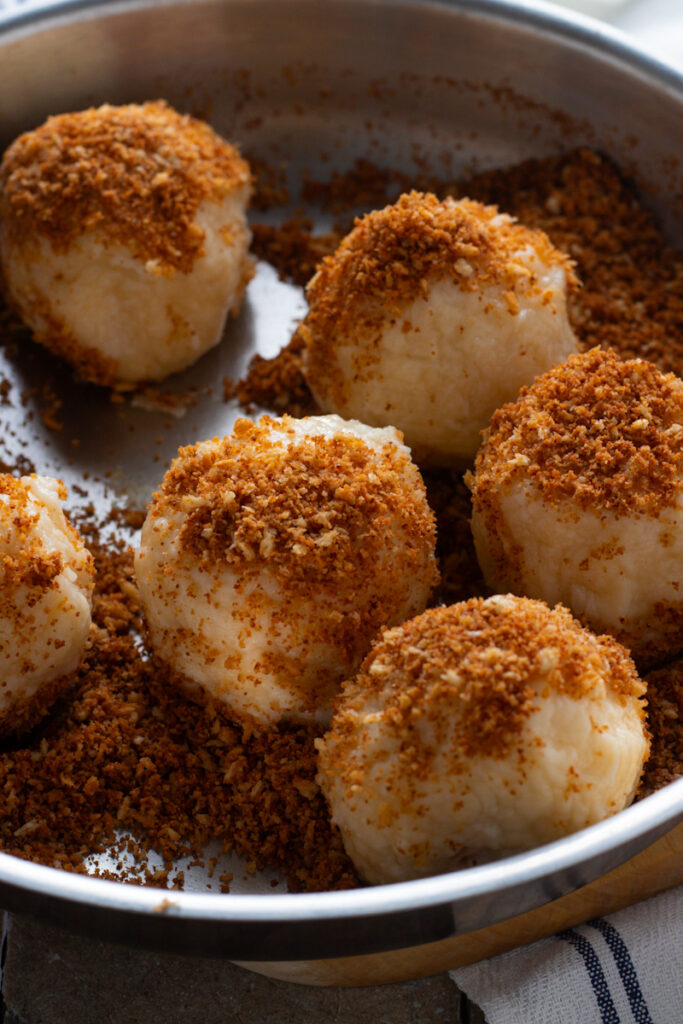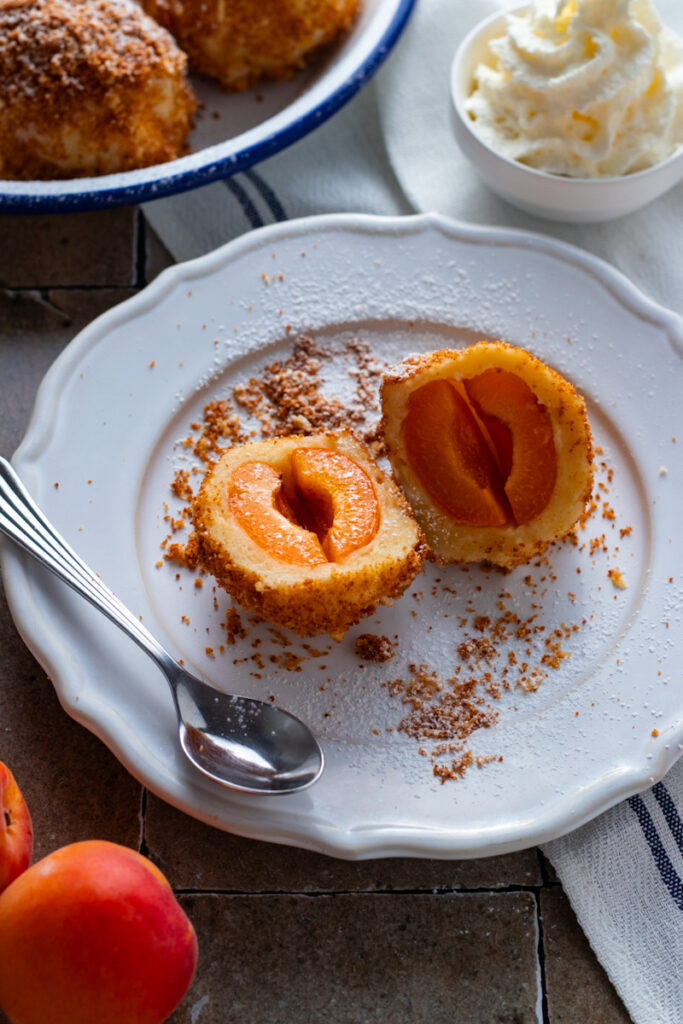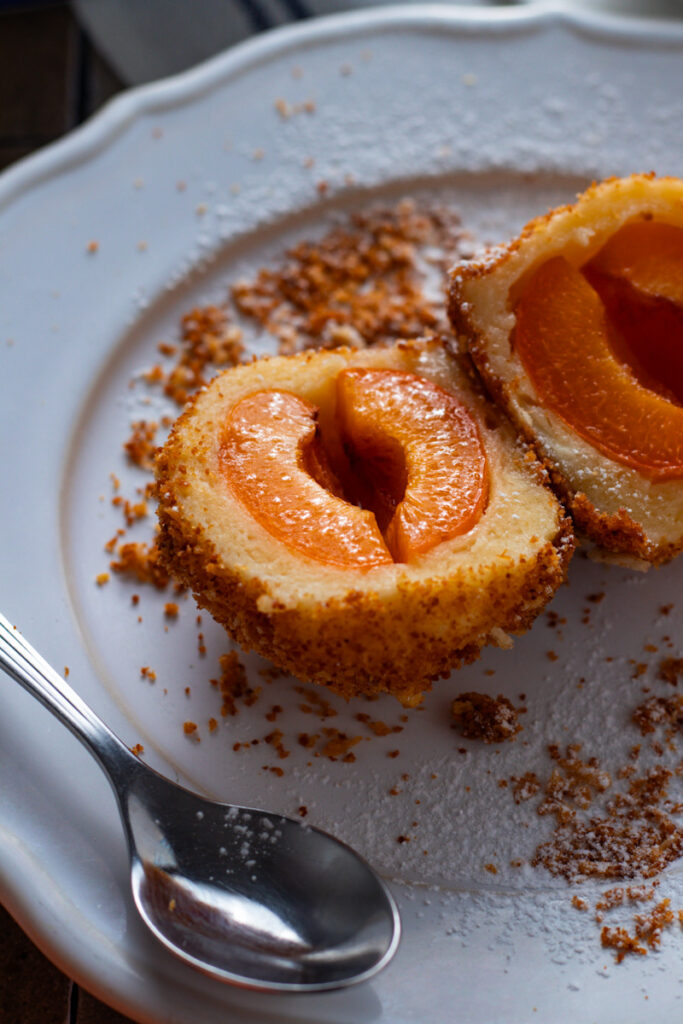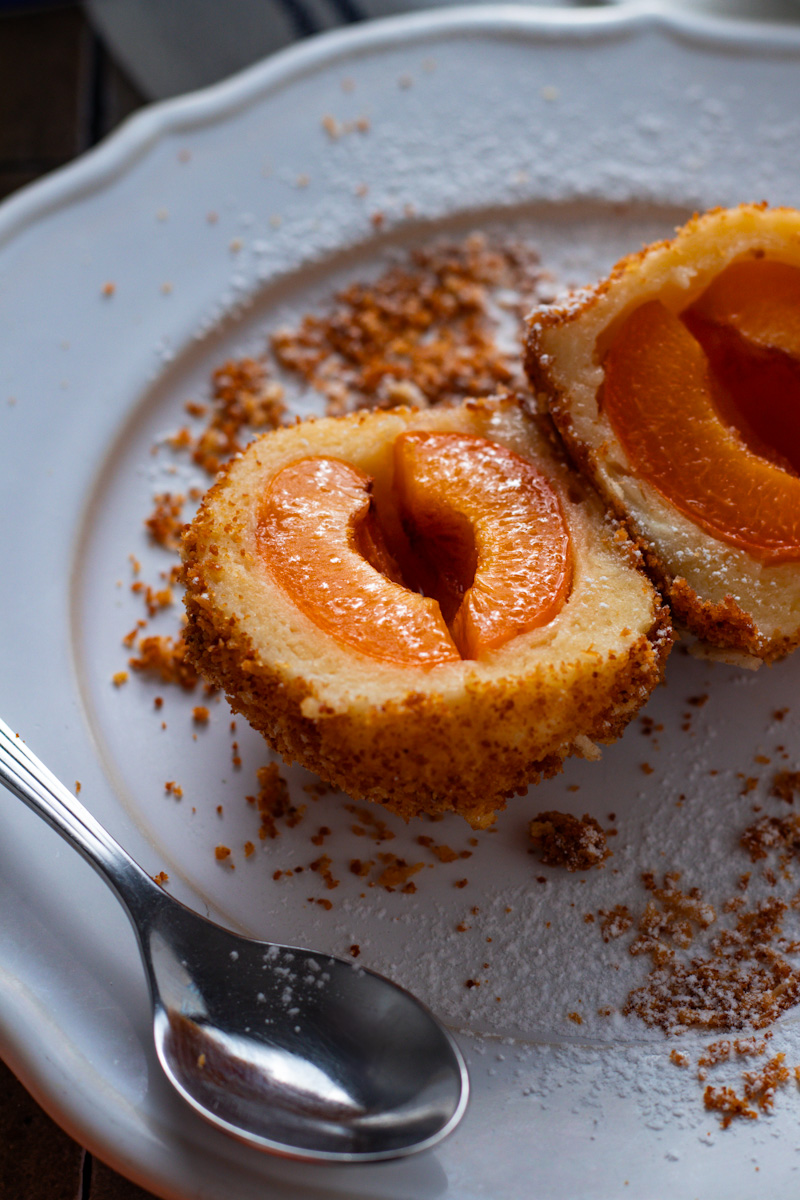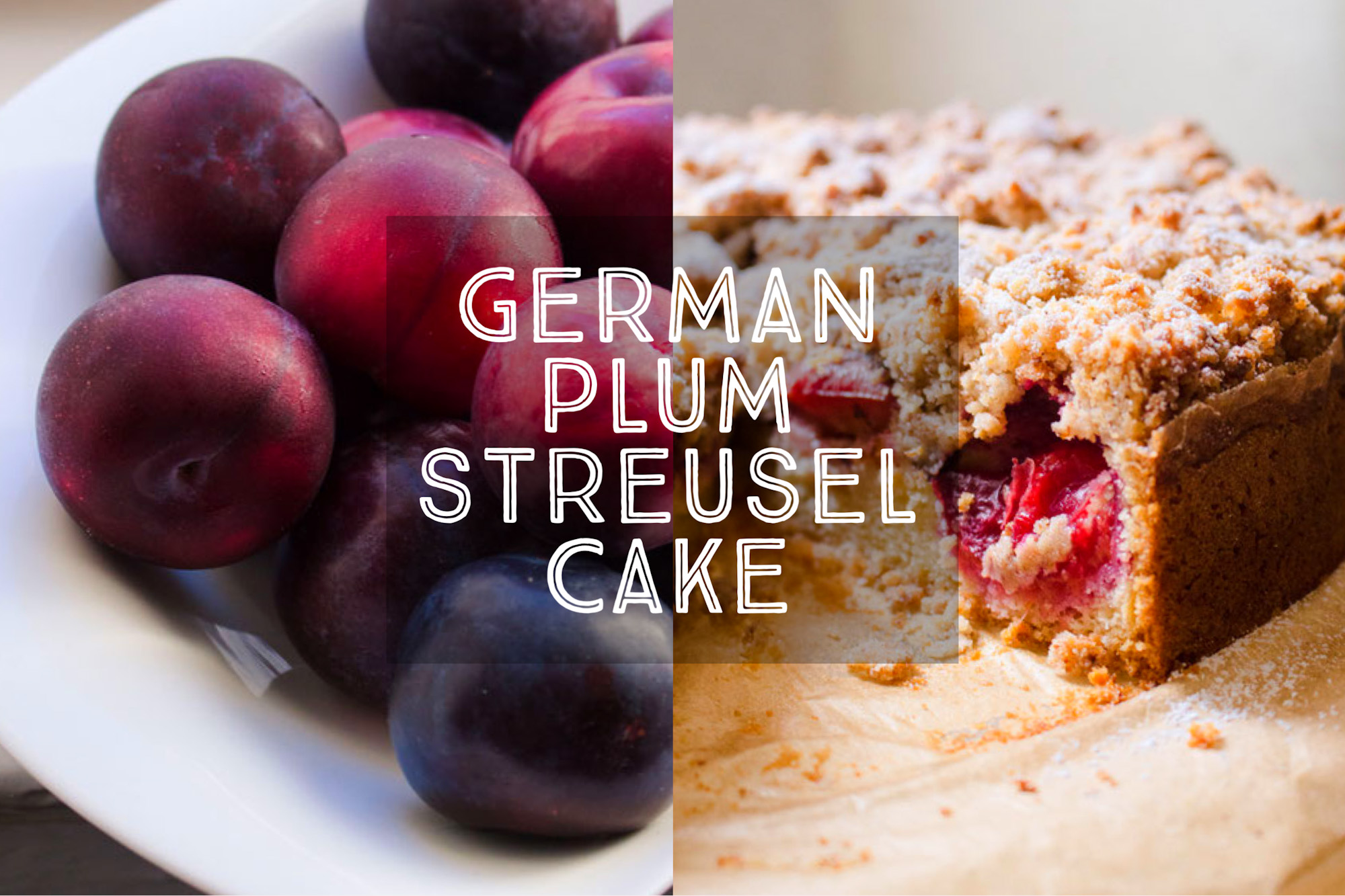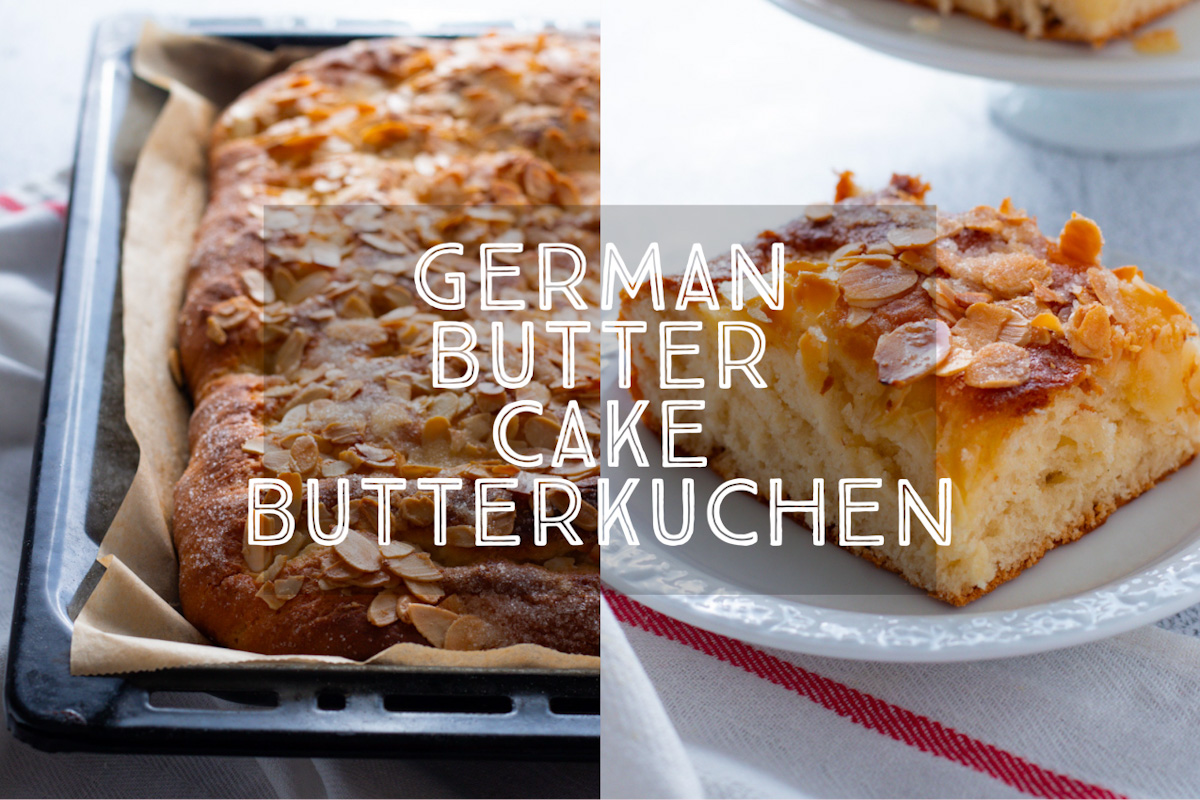
Marillenknödel – Austrian Apricot Dumplings
Marillenknödel or Austrian Apricot dumplings are a summer delight. Made from a simple dumpling dough filled with fresh apricots and a little sugar, these sweet treats always disappear fast. I like serving them with plenty of freshly whipped cream or vanilla ice cream. Delicious!
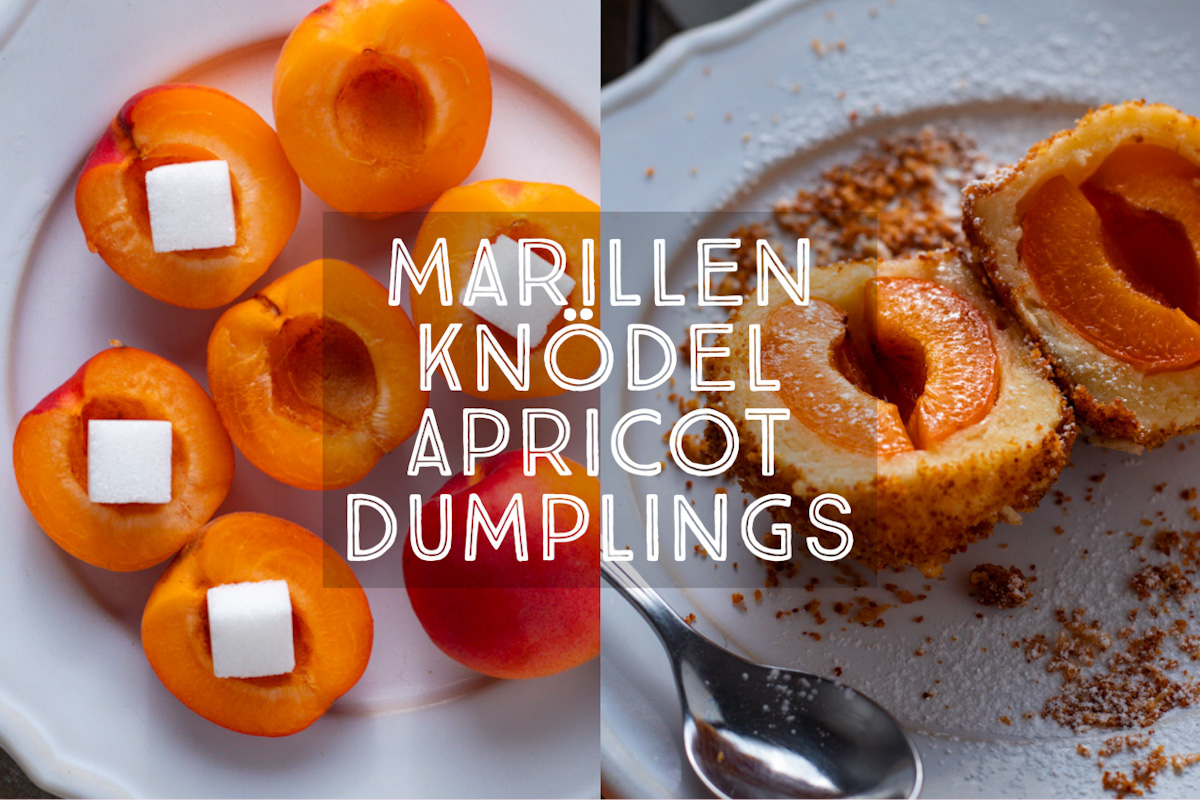
A classic of the Austrian kitchen, Marillenknödel or Austrian Apricot Dumplings make for a delicious summer meal in apricot season. While I prefer these as a dessert, this sort of dish is often served as a main meal in Austria and Southern Germany (I know, eat dessert first, right?)
However you serve them, they are a fantastic way to show off fresh summer stone fruit, and they always disappear quickly!
TABLE OF CONTENTS
▼
What are Marillenknödel?
Marillen is simply the Austrian term for apricots (known as Aprikosen in most German-speaking countries). Knödel are dumplings of all kinds, so when you combine Austrian apricots with dumplings, you get Marillenknödel! They are part of a group of foods known as Mehlspeisen, and while they might look like a dessert, they are often served as a main dish.
These Knödel are either made from a Quark dough (a type of curd cheese similar to ricotta) or a potato dough (Kartoffelteig). I have always found Quarkteig to be much easier for beginners, and that’s the dough we will make today.
Personally, I prefer these traditional apricot dumplings as a dessert, which is why I serve my Marillenknödel with lashings of whipped cream and vanilla ice cream!
Ingredients
As this is a classic, very old-fashioned dish, it has very simple ingredients:
- Apricots: It’s best to use smaller apricots for Marillenknödel; otherwise, the finished dumplings are too big. You’ll need to remove the stones, so you need apricots with nice loose stones. If you can’t get apricots, you could use other stone fruits, such as plums or cherries. Plum dumplings are one of my favourites!
- Quark/Topfen: This is the most challenging ingredient to find overseas despite being an absolute standard available in Germany and Austria. When I am abroad, I replace it with a well-drained ricotta instead (be sure that the ricotta hasn’t been salted!). If you can source fresh farmer’s cheese, that will also make a suitable substitute.
- Sugar: Traditionally, Marillenknödel are sweetened with a sugar cube pushed into where the apricot stone was. This makes a delicious sugar syrup in the middle of the dumpling. As I serve them as a dessert, I also like to add a little sugar to the dough. If you can’t get sugar cubes at the grocery store, just use a teaspoon of sugar or a spoonful of apricot jam per dumpling.
- Butter: I always use unsalted butter in baked goods so that I can control the amount of salt in the final dish.
- Breadcrumbs: Marillenknödel are rolled in a crust of golden brown buttery breadcrumbs before serving. (yum!). I either get fresh breadcrumbs from the bakery, make my own, or use a mixture of crushed-up panko breadcrumbs with regular breadcrumbs for the best texture.
- Egg: I use a German size Medium egg, which is closer to a large in most other countries.
The complete ingredient list and detailed instructions are in the recipe card at the bottom of the page.
Instructions
Marillenknödel are simple to make, though the dough can take a little getting used to the first time around.
- First, make the dough by combining the butter, egg and sugar in a bowl and beating until light and fluffy. Add the quark, flour and salt, and knead to a smooth dough. Turn out onto a well-floured work surface, knead gently and divide into six equal-sized pieces. Pat them gently into rounds.
- Next, cut the apricots in half, remove the stone, replace it with a sugar cube, and put the two halves back together again. Wrap each apricot in a dough round, pinching to seal, then carefully roll it between your palms to round it (like a snowball!).
- Heat a large saucepan of salted water until boiling. Add the dumplings one by one, then reduce the heat to a light simmer. Cook for 10 – 15 minutes until the dumplings are all floating.
- Meanwhile, melt the butter in a pan, add the breadcrumbs, and cook, stirring constantly, until the breadcrumbs are a rich golden brown. When the apricot dumplings are cooked, roll each one in the browned breadcrumbs and transfer to a serving plate.
- Dust generously with powdered sugar, and serve with plenty of whipped cream, vanilla ice cream or custard.
Frequently Asked Questions
Can I make Marillenknödel in advance?
While they are tastiest fresh, it is perfectly OK to eat Marillenknödel cold, room temperature, or re-warmed.
Can I use other fruit in these dumplings?
Yes! Other small stone fruits, such as plums or cherries, are the best. Make sure you use fruit where you can easily remove the stone; otherwise, it is a messy job! You could also try Buchteln instead.
What can I do with the leftover breadcrumbs?
I save mine in a container in the freezer for next time!
Austrian Apricot Dumplings Recipe
Marillenknödel – Austrian Apricot Dumplings
Marillenknödel or Austrian Apricot dumplings are a summer delight. Made from a simple dumpling dough filled with fresh apricots and a little sugar, these sweet treats always disappear fast. I like serving them with plenty of freshly whipped cream or vanilla ice cream. Delicious!
Ingredients
for the dough:
- 75 g unsalted butter, softened
- 1 egg
- 2 Tbsp vanilla sugar
- 250 g Quark, or strained ricotta
- 125 g plain or all-purpose flour
- pinch of salt
for the filling:
- 6 small apricots, halved and de-stoned
- 6 sugar cubes
- for the topping:
- 50 g unsalted butter
- 150 g fresh breadcrumbs
- powdered or icing sugar, for dusting
Instructions
- MAKE THE DOUGH: In the bowl of a stand mixer or using an electric hand mixer, beat the butter, egg and sugar until light and fluffy. Add the Quark or ricotta and flour and mix until you have a smooth, soft dough. Turn out onto a lightly floured surface and knead gently a few times. If you find the dough very sticky, add more flour until you can handle it easily. Do try not to use too much flour though, it can make the dumplings a little firm.
- SHAPE DUMPLINGS: Divide the dough into 6 equal pieces. With well-floured hands, gently pat each into a round. Place a sugar cube in the hole of one apricot half, press the other half against it to make one whole apricot, then wrap it in a piece of dough, pinching tightly to seal, then gently roll in your hands to form a round dumpling. Repeat with the remaining ingredients.
- COOK DUMPLINGS: Bring a large saucepan of salted water to the boil. Place dumplings into the boiling water one by one, then reduce the heat to a gentle simmer. Simmer for 10-15 minutes until the dumplings are all floating.
- BROWN BREADCRUMBS: In the meantime, melt the butter in a frying pan over medium heat, add the breadcrumbs and cook, stirring constantly, until they are toasted a lovely golden brown.
- ROLL DUMPLINGS: Use a slotted spoon to remove the dumplings from the water. Roll the hot dumplings in the toasted bread crumbs until they are completely covered, then transfer to serving plates. Dust generously with powdered sugar, then serve immediately with whipped cream, vanilla ice cream, or vanilla custard.
As an Amazon Associate and member of other affiliate programs, I earn from qualifying purchases.
Nutrition
Serving: 1dumpling | Calories: 423kcal | Carbohydrates: 47g | Protein: 11g | Fat: 21g | Saturated Fat: 12g | Polyunsaturated Fat: 1g | Monounsaturated Fat: 5g | Trans Fat: 1g | Cholesterol: 72mg | Sodium: 251mg | Potassium: 177mg | Fiber: 2g | Sugar: 15g | Vitamin A: 1235IU | Vitamin C: 4mg | Calcium: 63mg | Iron: 2mg
Tried this recipe?I’d love to hear how it went! Please leave a review or a star rating and let me know how it was! Use the hashtag #daysofjay on Instagram so I can see your delicious creations.

About the Author
Jay Wadams is a cookbook author, food photographer, and graduate of Le Cordon Bleu in Gastronomy and Nutrition.
Based in Italy 🇮🇹 Germany 🇩🇪 and Australia 🇦🇺.



